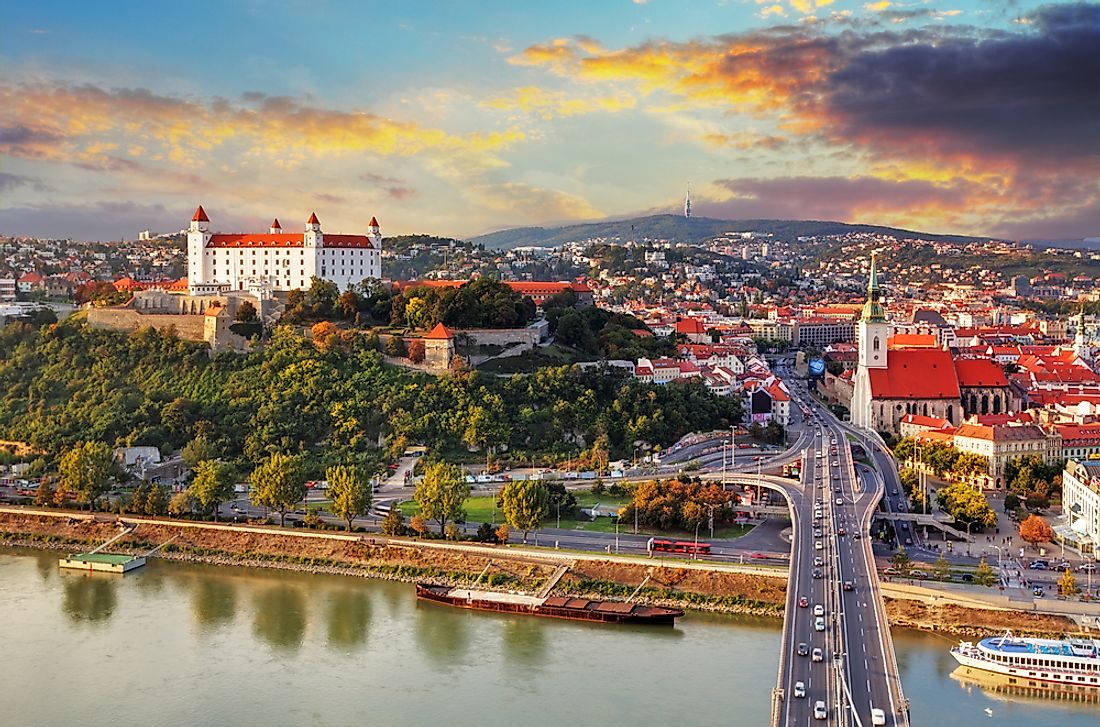What Is The Capital Of Slovakia?

Where Is Slovakia?
Slovakia is a landlocked nation located in Central Europe. The mountainous country occupies an area of approximately 49,000 square km and has a population of 5.4 million people. Slovakia is bordered by Poland, Ukraine, the Czech Republic, Hungary, and Austria to the north, east, west, south, and southwest, respectively.
What Type of Government Does Slovakia Have?
Slovakia is governed as a unitary parliamentary republic. The president of Slovakia serves as the head of state, while the prime minister is the head of government. It is the prime minister, rather than the president, that holds the most executive power. Other ministers of the cabinet are appointed by the president on the basis of the prime minister’s recommendation. The legislative branch of government is represented the National Council of the Slovak Republic, which has 150 members. The Constitutional Court of Slovakia is the country’s highest judicial body.
What Is the Capital of Slovakia?
Bratislava serves as Slovakia’s capital city. The city encompasses a total area of 367.584 square km and has a population of approximately 450,000, while the metropolitan area has a population of more than 650,000 people. Although Bratislava is the country’s largest city, it is one of the smallest capitals in Europe in terms of population. The city's population is diverse and includes Austrian, Hungarian, German, Slovak, Serbian, and Jewish populations. Bratislava is part of the Bratislava Region and is located in southwestern Slovakia. The city is situated along the Danube river, close to where the frontiers of Slovakia, Hungary, and Austria meet. The river runs through the city from the west to the southeast. Other tributary rivers of the Danube also flow along the periphery of the city.
History of Bratislava
The area that makes up present-day Bratislava served as the home of prehistoric populations, according to archeological evidence gathered at the site. The region was later inhabited by the Celts and Romans, followed by the Slavs in the 8th century. In the 10th century, the land, which was then named Pressburg, came under the control of the Kingdom of Hungary. The city soon grew to become an economic and administrative center of the kingdom’s frontier region and was the site of numerous invasions and attacks. In 1405, Pressburg was granted the status of a free royal town, and later the capital of the Kingdom of Hungary in 1536. Eleven kings and queens of the kingdom were crowned in the city between 1536 and 1830. The city subsequently experienced various invasions and forms of turmoil, including floods and plagues, until it became the capital of Slovakia in the first Czechoslovakian Republic after the First World War. The name Bratislava was formally adopted on March 27, 1919. After the fall of the Soviet Union, Slovakia gained independence in 1993, and Bratislava was named the capital of the new Slovak Republic.
Role of Bratislava as the Capital of Slovakia
Today, Bratislava is Slovakia’s political, economic, and cultural center. Notable buildings in the city include the Grassalkovich Palace, which is the home of the president, and the Episcopal Summer Palace, serving as the home of the government. The Slovakian parliament also meets in Bratislava. The city contains the headquarters of most businesses and financial institutions of Slovakia, as well as many prestigious higher educational institutions, theaters, and galleries.











